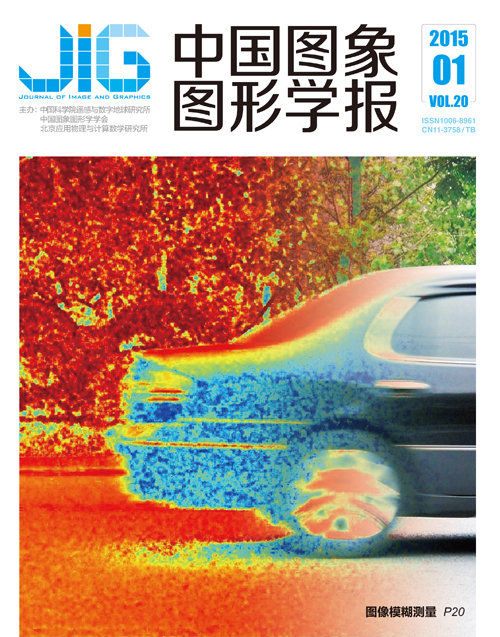
融合特征的快速SURF配准算法
摘 要
目的 针对基于SURF特征点的图像配准算法对颜色单一的彩色图像提取的特征点较少及配准时间复杂度高等问题,提出一种基于融合特征的快速SURF(speed up robust features)配准算法。方法 该算法首先提取图像的颜色不变量边缘特征和CS-LBP(central symmetry-local binary patterns)纹理特征形成融合特征灰度图,并利用颜色直方图的方差自适应调节融合特征间的权重。其次,在融合特征灰度图上提取SURF(speed up robust features)特征点及描述子。再次,用最近邻匹配法形成粗匹配对,结合改进的快速RANSAC(random sample consensus)算法得到精匹配对。最后,使用最小二乘法求出映射关系用于配准图像。结果 本文算法能够在融合特征上提取更稳定的SURF特征点,用该特征点进行配准能提高配准5%精度,且减少时间复杂度15%,实现了对普通场景下图像的快速配准。结论 本文算法能提取稳定数量的特征点,提高了精确度与鲁棒性,并通过改进的RANSAC算法提高了执行效率,降低了迭代次数。
关键词
Fast SURF key-points image registration algorithm by fusion features
Luo Tianjian, Liu Binghan(College of Mathematics and Computer Science, Fuzhou University, Fuzhou 350108, China) Abstract
Objective Using image registration algorithms leads to poor results when the color of original images is simple and when time complexities are high.Thus, we propose the method fast speed up robust feature (SURF)keypoint registration algorithm by using fusion features. Method Color invariance margin and central symmetry-local binary pattern(CS-LBP)as fusion features are first extracted, and the variance of quantified color histogram for the weight of the fusion features is calculated. SURF keypoints and descriptors on grayscale are extracted. The use of the nearest neighbor match method requires rough matches, whereas the use of improved random sample consensus(RANSAC) algorithm requires fine matches. Least Square Method(LMS)needs transform relation to register. Result Experimental results show that the proposed algorithm can extract robust SURF features in fusion feature, and using these features for image registration can improve precision by 5% and decrease time complexity by 15%. Thus, this method can pervade images of all situations. Conclusion The proposed algorithm can obtain enough keypoints to improve precision and robustness; the improved RANSAC decreases time complexity and iterations.
Keywords
speed up robust feature keypoints color invariance margin central symmetry-local binary patterns texture random sample consensus least square method
|



 中国图象图形学报 │ 京ICP备05080539号-4 │ 本系统由
中国图象图形学报 │ 京ICP备05080539号-4 │ 本系统由